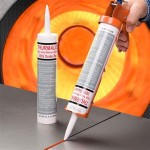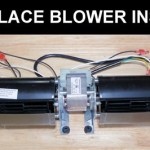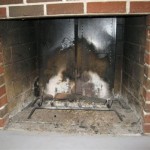Rutland Fireplace Mortar Curing: A Comprehensive Guide
Fireplace mortar is a critical component in the construction and maintenance of fireplaces, wood stoves, and chimneys. It serves as a binding agent, holding bricks and stones together, sealing gaps to prevent gas and smoke leaks, and providing structural integrity to the entire system. However, freshly applied fireplace mortar is weak and susceptible to damage. The process of curing fireplace mortar is essential for achieving its full strength, durability, and resistance to the high temperatures and harsh conditions it will encounter. Understanding the nuances of fireplace mortar curing is crucial for both professionals and homeowners to ensure a safe and long-lasting fireplace system.
Rutland is a well-known brand in the fireplace and stove industry, offering a range of mortars specifically formulated for high-temperature applications. Their products are designed to withstand the extreme heat and cyclical temperature changes common in fireplaces and stoves. While specific curing instructions may vary slightly depending on the exact product, the general principles of mortar curing remain consistent. This article will delve into the key aspects of Rutland fireplace mortar curing, providing a detailed guide to achieving optimal results.
Understanding the Chemical Processes in Mortar Curing
The curing process of fireplace mortar involves a complex series of chemical reactions that transform the initially pliable material into a strong, durable, and heat-resistant compound. Unlike cement mortar, which primarily relies on hydration (a reaction with water) to harden, many fireplace mortars, especially those designed for high-temperature applications, contain a blend of components that undergo more intricate chemical transformations. These components can include aluminates, silicates, and other refractory materials.
Initially, the mortar is in a plastic state, allowing it to be easily applied and shaped. As the mortar dries, water evaporates from the mixture, initially leading to a loss of workability. However, the actual strengthening process requires more than simple drying. The key is to allow the chemical reactions to proceed at an optimal rate. Too rapid drying can result in cracking and weakening of the mortar, as the internal stresses cannot be adequately dissipated. Conversely, excessively slow drying may not allow the mortar to achieve its desired strength and heat resistance within a reasonable timeframe.
The specific chemical reactions depend on the composition of the mortar. Generally, high-temperature mortars undergo a process called sintering at elevated temperatures. Sintering involves the bonding of the individual particles of the mortar through a process of diffusion at high temperatures, creating a strong, cohesive mass. This process is critical for the mortar's ability to withstand the extreme heat and thermal cycling of a fireplace or stove. The heating schedule during the curing process is designed to facilitate this sintering process in a controlled manner.
The final cured mortar possesses a significantly higher compressive strength, tensile strength, and resistance to thermal shock compared to the uncured material. This enhanced durability is essential for preventing cracking, spalling, and other forms of degradation that can compromise the safety and efficiency of the fireplace system. Therefore, a proper curing process is not merely a matter of waiting for the mortar to dry; it is a precisely controlled sequence of events designed to optimize the chemical transformations that deliver the desired performance characteristics.
Key Factors Influencing Rutland Fireplace Mortar Curing
Several factors influence the rate and quality of Rutland fireplace mortar curing. Controlling these factors is crucial for achieving the desired outcome: a strong, durable, and heat-resistant mortar joint.
Temperature: Temperature is arguably the most critical factor. As mentioned previously, the curing process, particularly the sintering phase, is highly temperature-dependent. Rutland mortars often require a gradual increase in temperature to facilitate the controlled chemical reactions. Rapid heating can cause the mortar to dry out too quickly, leading to cracking and reducing its overall strength. Conversely, insufficient heat may prevent the sintering process from occurring effectively, leaving the mortar weak and susceptible to degradation. Therefore, adhering to the manufacturer's recommended heating schedule is paramount.
Humidity: The humidity level surrounding the mortar can also affect the curing process. High humidity can slow down the initial drying phase, which may be beneficial in preventing premature cracking in some cases. However, excessively high humidity can also inhibit the overall curing process. Conversely, very low humidity can lead to rapid drying, which, as previously discussed, can be detrimental. Maintaining a moderate humidity level is generally recommended, especially during the initial stages of curing.
Mortar Composition: The specific composition of the Rutland mortar itself plays a significant role in its curing characteristics. Different formulations are designed for different applications and temperature ranges, and each may have slightly different curing requirements. For example, a mortar designed for use in a high-temperature firebox may require a more gradual heating schedule than a mortar used for patching exterior chimney joints. Always refer to the specific product data sheet for detailed curing instructions tailored to the particular mortar being used.
Airflow: Airflow around the mortar joint can influence the rate of drying. While some airflow is necessary to remove moisture, excessive airflow can lead to rapid drying and cracking. It is generally recommended to provide moderate ventilation during the curing process, avoiding drafts that can cause uneven drying. This can be achieved by partially opening windows or doors, or by using a fan on a low setting to circulate air gently.
Mortar Thickness: The thickness of the mortar joint can also affect the curing time. Thicker joints naturally take longer to cure than thinner joints because it takes longer for the moisture to evaporate from the interior of the joint. This is another reason why uniform application of the mortar is important.
The Recommended Curing Schedule for Rutland Fireplace Mortar
While specific curing instructions may vary depending on the particular Rutland product, a general guideline for curing fireplace mortar typically involves a gradual and controlled heating process. This approach allows the mortar to dry and sinter properly, maximizing its strength and durability. It is crucial to always consult the product data sheet for the specific Rutland mortar being used, as the manufacturer's recommendations should always take precedence.
A typical curing schedule might involve the following stages:
Initial Drying (Air Curing): This phase involves allowing the mortar to air dry for a specified period, typically 24 to 48 hours. The purpose of this stage is to allow the surface moisture to evaporate from the mortar, setting the stage for the subsequent heating phase. During this period, it is important to protect the mortar from direct sunlight, rain, and extreme temperature fluctuations. Maintaining moderate humidity and airflow is also beneficial during this phase.
Low-Temperature Heating: After the initial air-drying period, a gradual heating process begins. This typically involves starting with a small fire or using a controlled heat source, such as a heat lamp or electric heater, to gently warm the mortar. The temperature should be slowly increased over a period of several hours, allowing the mortar to dry evenly and prevent cracking. A common practice is to start with a low fire for 2-3 hours.
Gradual Temperature Increase: Following the low-temperature heating phase, the temperature is gradually increased over the course of several days. This can be accomplished by gradually increasing the size of the fire or by adjusting the settings on the heat source. The goal is to allow the mortar to sinter properly without subjecting it to excessive thermal stress. Rutland often recommends a series of small fires increasing in size over a few days.
Full Operating Temperature: Once the mortar has been gradually heated to a moderate temperature, it can be slowly brought up to its full operating temperature. This should be done gradually, allowing the mortar to adjust to the extreme heat of the fireplace or stove. Avoid subjecting the mortar to sudden temperature shocks, as this can lead to cracking and spalling.
Monitoring for Cracks: Throughout the curing process, it is essential to monitor the mortar for any signs of cracking. Small hairline cracks are sometimes unavoidable, but larger cracks or extensive cracking can indicate a problem with the curing process. If significant cracking occurs, it may be necessary to repair or replace the affected mortar joints. It's also critical to ensure the chimney flue is venting properly to minimize moisture absorption which can damage or degrade the mortar over time.
Following these guidelines and adhering to the specific instructions provided by Rutland will help ensure that the fireplace mortar cures properly, resulting in a strong, durable, and safe fireplace system. Proper curing is an investment in the longevity and safety of the fireplace, providing peace of mind and ensuring years of reliable performance.

2000ºf Fireplace Mortar Rutland

Rutland 10 3 Fl Oz Fireplace Mortar Cartridge In Gray 63g The Home Depot

Rutland 10 3 Fl Oz Fireplace Mortar Cartridge In Gray 63g The Home Depot

2000ºf Fireplace Mortar Rutland

Rutland Fireplace Mortar Blazzing Fire

Furnace Cement Rutland

Rutland 64 Fl Oz Refractory Cement Tub 610 The Home Depot

Heat Curing Process For Rutland Indoor Cements

2000ºf Fireplace Mortar Rutland

Rutland Fireplace Mortar Cartridge 10 3 Ounce Gray 63g Pack
Related Posts








